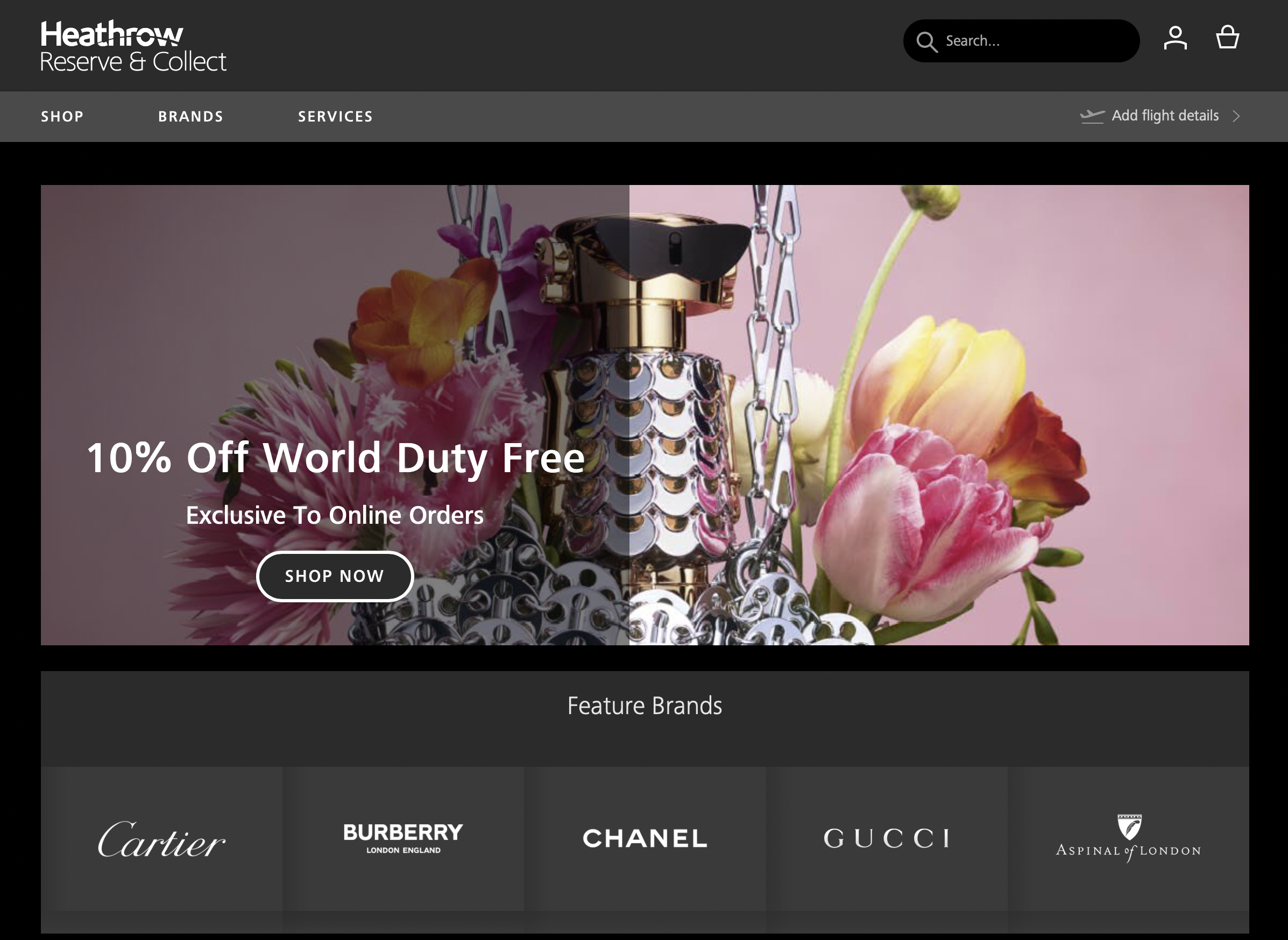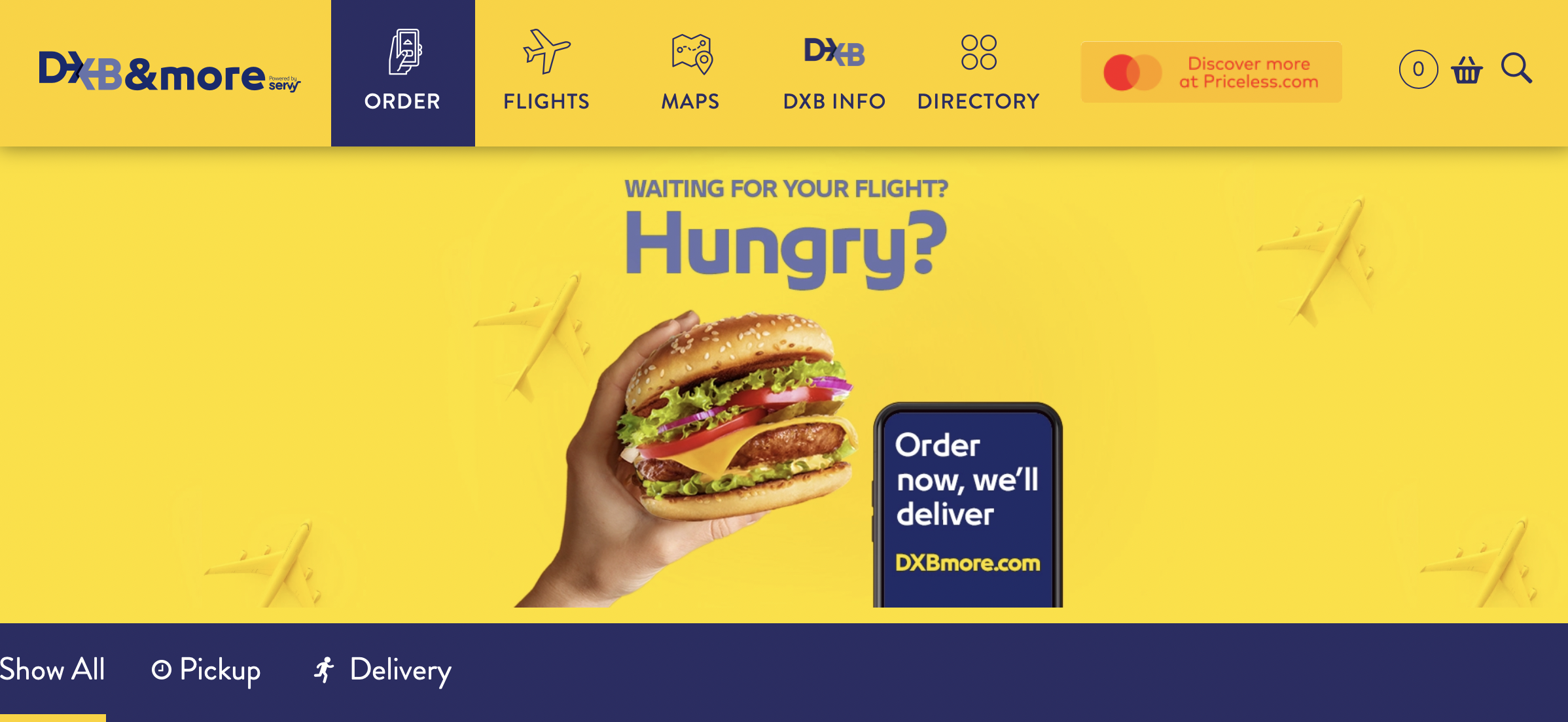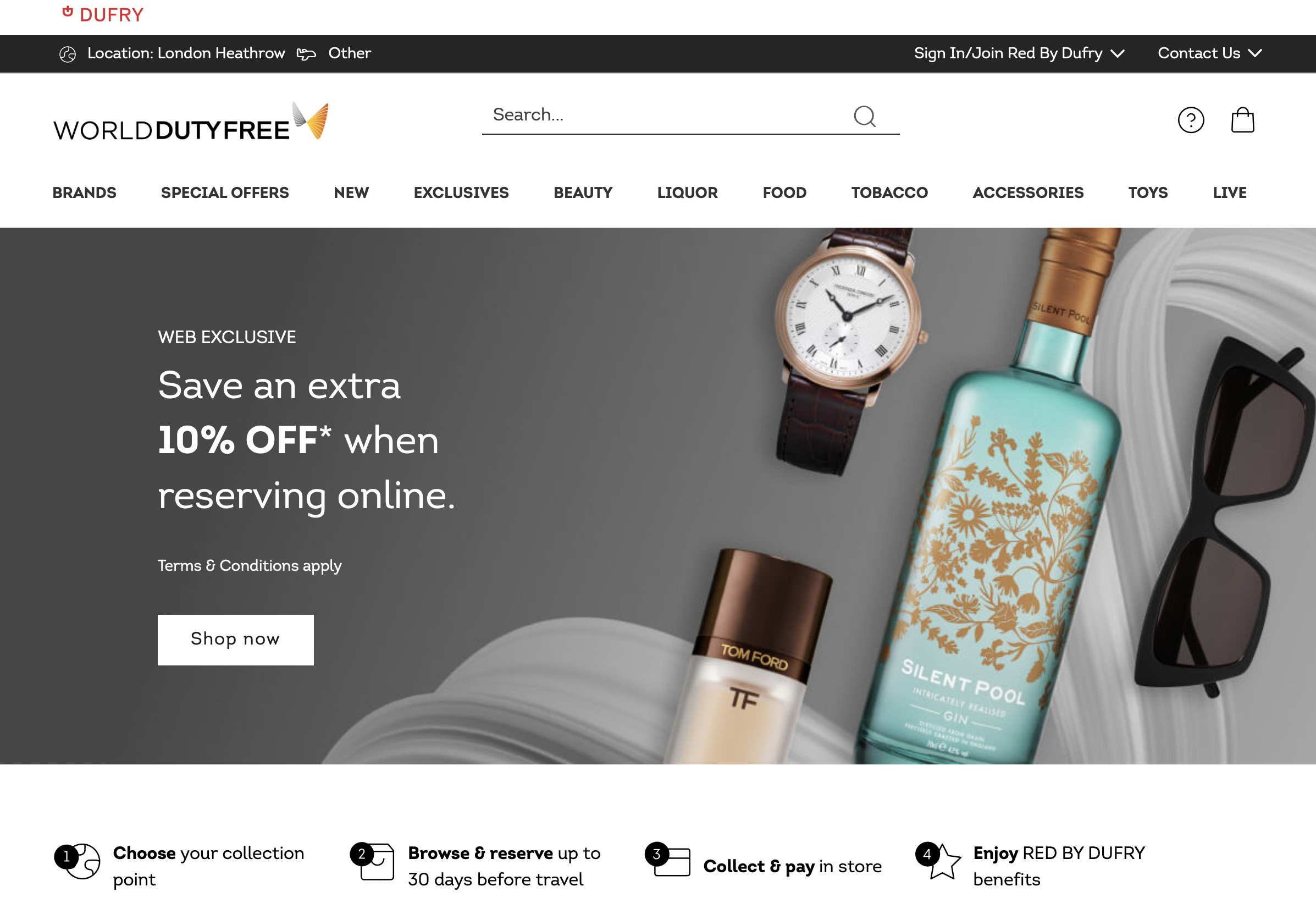Head of Altavia Travel Retail Hugo Vanderschaegh considers the models being used to exploit ecommerce opportunities in the travel retail channel.
Introduction
Globally 58% of people now prefer to shop online1, which poses challenges and opportunities for traditional bricks and mortar, and travel retail models.
The travel retail industry has been through an unprecedented period of disruption. With passenger numbers plummeting overnight, hub operators, brands and retailers have adapted to survive, reaching passengers through new and innovative means, ecommerce being one method.

On top of this, the closure of physical retail, both domestic and airside, forced consumers to become digitally savvy across all categories. Two years on passenger numbers are showing promising recovery. Audiences are welcoming travel back into their lives and their new digital habits are here to stay.
Passengers are relying on digital services throughout their travel journeys more so than ever before, providing new opportunities to interact and service passenger needs through digital means.
When you combine these factors, it has never been so critical to have a strong ecommerce offering that can support and inspire passengers throughout their trip.
In this article we look at the several models being used throughout the industry.
Ecommerce models being used in GTR
1. Central hub offering with reserve and collect
The marketplace or hub model is often presented as the most promising option, where all the shopping, F&B and services the airport offers are showcased under one central platform. This option makes search and navigation easy for passengers, allowing them to access all services in one place.
With boutique.heathrow.com, Heathrow Airport is one such operator offering joined up ecommerce services. Passengers can shop a wide range, from fashion to duty free core categories, to travel bags and more, with the option to reserve and collect. Ensuring a consistent experience regardless of who the retailer is. While the current online range is not as extensive as the physical range on offer, Heathrow is making great steps in offering a wide range online.

Additional benefits that Heathrow currently offer include a loyalty scheme, -10% off certain categories and a 30-minute order and collect fulfilment, perfect for travellers who have forgotten something.
With 80% of purchases in duty free stores being planned to some extent2, reserve and collect gives customers the opportunity to plan and collect in-store. With long queues for bag-drop and security witnessed this summer, this model gives peace of mind to those worried that they won’t have ample time to shop airside.
2. Home delivery
Dubai Duty Free online store goes beyond reserve and collect, with the option of home delivery or downtown pick up on certain items. Products available for delivery are sold on a custom duty paid basis and subject to 5% VAT3.
During the retailer’s December sale, where a -25% discount is available on a range of merchandise over three days, Dubai Duty Free recorded online sales topping Dhs8.761 million (US$2.4 million) with a total of 7,134 combined orders4. With 10% of the total sales during the event done online4, and online sales doubling between 2019 and 2020, Dubai Duty Free is seeing the benefits of supporting their physical offering with ecommerce.
3. Post-travel shopping
In Hainan, the golden hours keep running after take-off. In a bid to boost the island of Hainan’s already burgeoning duty free business, China Duty Free Group introduced a new scheme in Summer 2020. It allowed mainland visitors to Hainan to spend any of their unspent RMB30,000 (US$4,240) allowance online for up to 180 days once they arrive back home – and have the goods couriered to their home. The expanding allowances and opportunity to purchase online post-travel saw duty free sales on Hainan surge +226% in the first year of the new boosted allowances 5.
Tactics like this help drive sales long after passengers have arrived home, servicing the consumer’s desire to purchase online while, where possible, passing on the savings and exclusive product offers found in-airport.
4. In-terminal delivery

In a world accustomed to rapid food delivery providers such as Deliveroo and Just Eat, Dubai Airport has launched its own delivery platform DXB&more. Launched in October 2021, the marketplace of Dubai International Airport gives passengers the ability to order food online. Once ordered passengers can either have it delivered to their gate or they can pick up in-store.
The strength of this website is that it aggregates dozens of F&B outlets, all run by different operators, into a fully integrated and seamless experience for the passenger. Currently the marketplace also offers a limited range of Dubai Duty Free items.
5. Live shopping
Going further to create digital engagement was Lotte Duty Free’s ‘LDF Live’ broadcast for Amorepacific skin care. The livestream was aimed at shoppers who were preparing for overseas travel. While viewing, customers could enjoy duty free shopping from home through the Lotte Internet Duty Free Shop app.
Livestream shopping events generated an estimated US$5.6 billion in sales in 2020 – and that number is projected to more than quadruple to nearly US$26 billion by 20236. What’s more 69% of urban Chinese consumers who have watched livestream shopping in 2021 made a purchase 7, illustrating the growing opportunity in livestreaming ecommerce.

So, what is the right model?
Retailers and airports are still exploring their ecommerce models, trying to adapt to the consumer trends and navigate through the local taxes and customs regulations. Not every country will allow you to purchase duty free six months after you visit the airport. And not every market wants the same experience, for example TikTok just gave up on its live shopping platform in Europe and the USA.
However, betting on convenience might be the most powerful and lasting investment. 30 minutes fulfilment, multiple payment and pick-up options, and gate delivery, all coupled with a seamless UX proves to be a successful recipe, but perhaps one the passenger is not yet aware of or used to. Across the industry a job needs to be done to educate passengers on the new services available.
The most traveller-friendly model is a central marketplace gathering F&B, retail, and services. But in such cases the airport owns the platform and therefore the data, which as we all know is not information the retailers want to give up easily. On the other hand, the brands are yet to reveal their strategy for GTR ecommerce, but the leading players are building CRM tools and it won’t be long before brand-led ecommerce initiatives are revealed.
We are in the middle of an exciting period for GTR ecommerce. Every day brings new ideas and new proof of concepts. But surely the perfect ecommerce model will be passenger centric and emerge from a hybrid collaboration between brands, retailers and airport under a data sharing scheme.
How to win in ecommerce
One of the great strengths of ecommerce is the ability to test and learn. It is often quick and easy to make changes to your ecommerce strategy, with the benefit of being able to see the results almost instantly.
Next, we explore some of the areas we advise our clients on when developing their ecommerce strategies.

Firstly, optimising copy is key to ecommerce success. It is critical you include frequent, popular search terms in product titles and descriptions to help navigation. To optimise copy effectively you need to understand what your audience is searching for, helping you optimise keywords and answer your customer’s needs and queries.
Another key area is imagery. Shoppers quickly make decisions based on the images they see. Images should therefore immediately answer shopper questions about size and design. The images you use should also be mobile-friendly, meaning these messages are not lost on smaller devices. Ensure essential elements are magnified and optimised for mobile, with a variety of images used to help shoppers to visualise products better.
Often complementary to imagery is rich media. Videos exploit our human curiosity. They force customers to stop scrolling and pay an extra second of attention to the features and benefits of your product. A video can showcase the brand in an entirely different way. It’s an excellent means of sharing the brand story and connecting with your customers.
In fact, 72% of customers prefer to learn about a product or service by way of video 8. The first nine seconds of the video are the most crucial, during those 9 seconds you must gain the customer’s attention and hook them in8.
Overall design your ecommerce offering with the consumer at the heart, they should be your motivation for every decision. Always ask what your customers would want, making sure the copy, imagery, and video are engaging, on-brand, and interesting for shoppers, while answering any questions they may have.
Find the right balance
Major shifts in the way consumers shop and travel are driving opportunities in the ecommerce arena, but it would be foolish to ignore the many strengths that physical GTR has to offer.
One of the great advantages of travel retail is a captured audience, often an audience with dwell time in a heightened state of excitement. This makes travel retail the perfect location for engaging brand activations that have a halo effect long after travel.
Ecommerce can and should support an amazing airport experience, with services such as collect and reserve and post-travel delivery helping boost sales pre- and post-travel.
It is clear ecommerce is only growing in importance, now is the time to trial new services and offerings, perfecting the proposition for your audience and market. Overall, we need to ensure that passengers are having a consistently brilliant experiences no matter how they shop and interact with retailers and brands.
Sources
- GWI: Commerce Report 2021
- M1ndset 2022.
- Forbes Magazine 2021
- com 2021
- TR Business: Hainan offshore duty-free sales rise 2021
- Deloitte: The new digital divide. The future of digital influence in retail 2016
- Mintel press office 2021
- Seller Logic 2021







